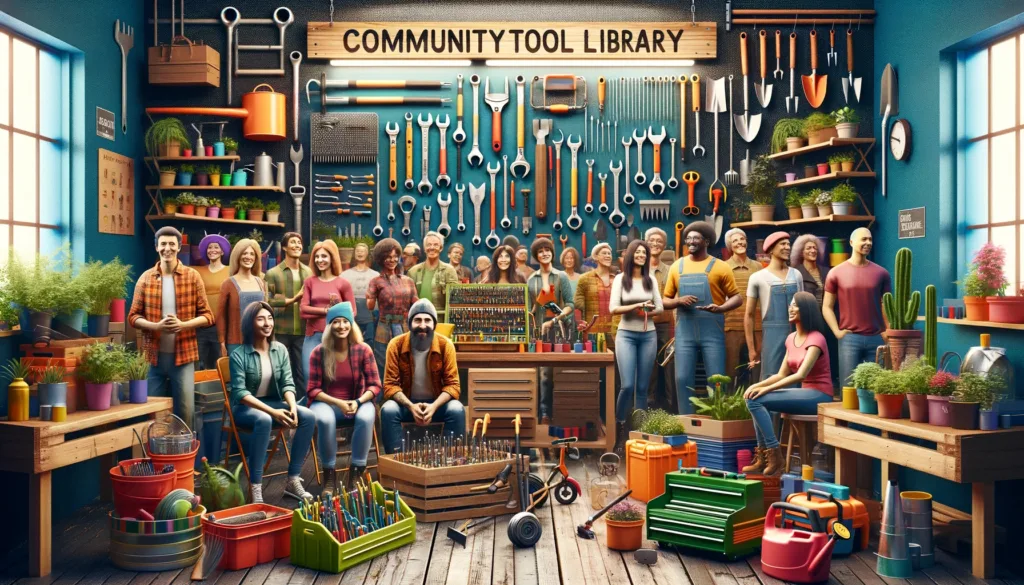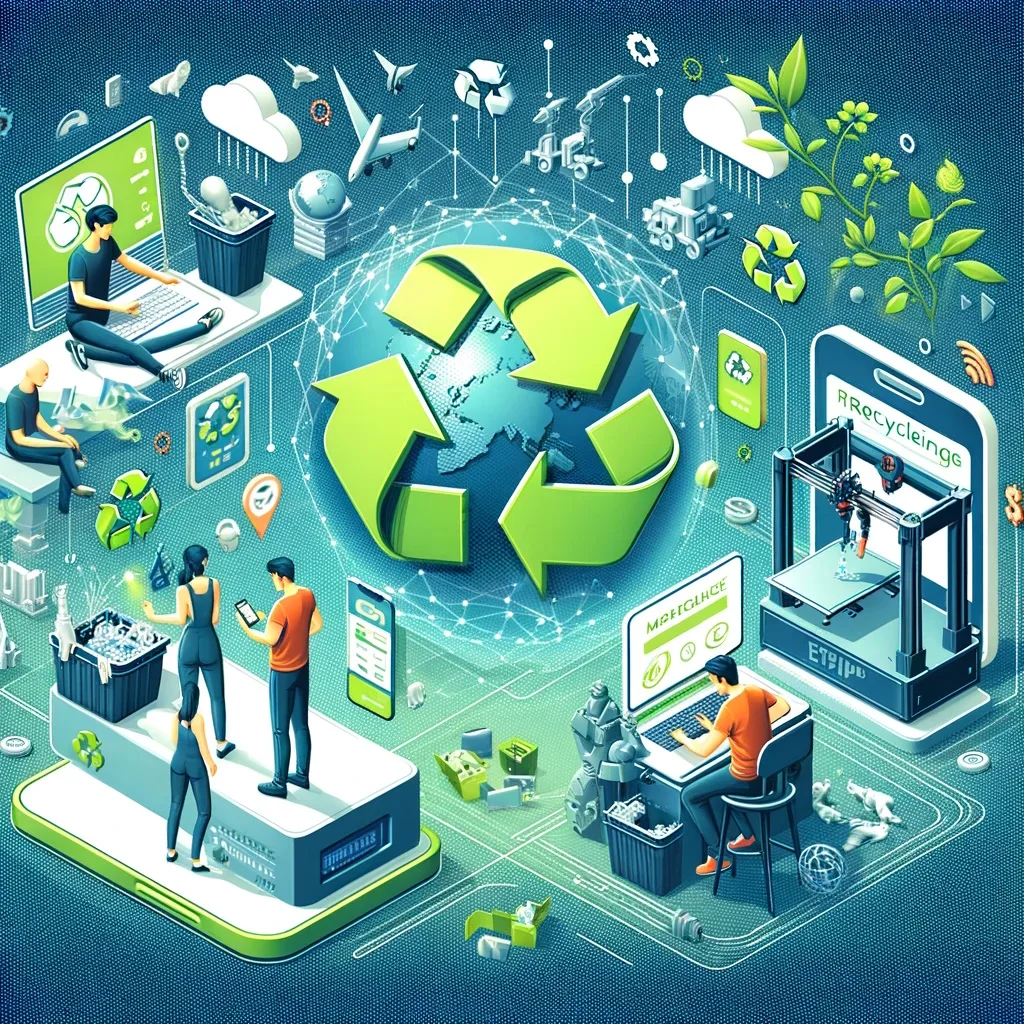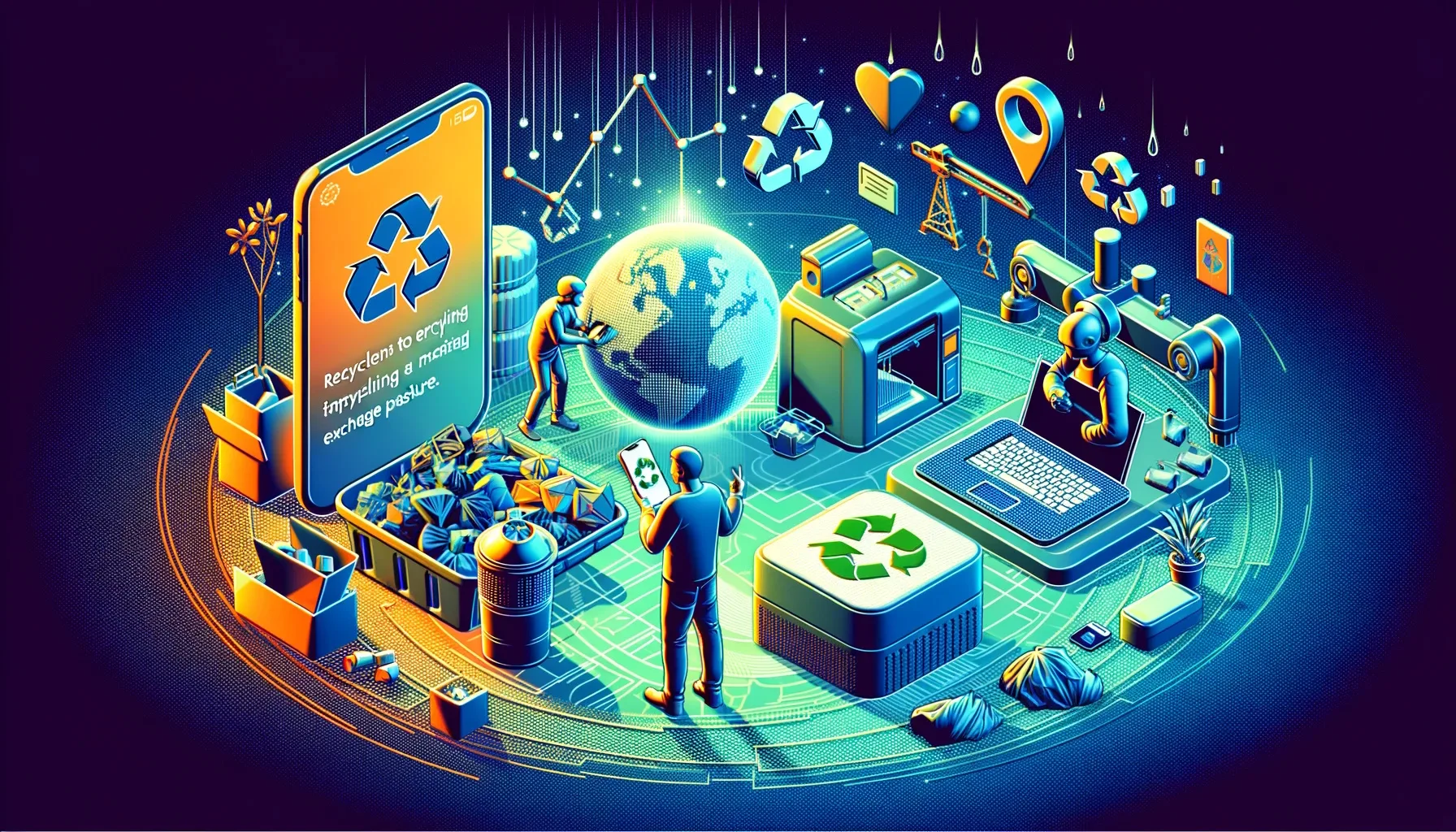In a world increasingly concerned with sustainability, the traditional mantra of “reduce, reuse, recycle” has become a standard. However, the potential of recycling extends far beyond the blue bins and community centers. It’s about creatively repurposing what we have in ways that benefit our planet and our wallets. Let’s embark on a journey of discovering non-traditional methods of recycling and reusing, exploring how these practices can lead to significant savings.
Rethinking Recycling: Beyond the Bin
The concept of recycling usually brings to mind images of sorting plastics, glass, and paper. However, recycling can be more inventive and impactful. The key lies in seeing the potential in objects that are typically discarded or overlooked.
- Clothing and Textile Repurposing: Instead of throwing away old clothes, consider ways to give them a new life. A worn-out T-shirt can become a cleaning rag, a stylish tote bag, or even material for a new garment. This not only reduces waste but also saves money that would have been spent on new items.
- Upcycling Furniture: Old furniture shouldn’t just be a sidewalk farewell. With a bit of creativity, an old dresser can be transformed into a kitchen island, or a broken chair can become a unique garden planter. Upcycling furniture combines creativity with environmental consciousness, creating something new and functional while reducing waste.
- Electronics and Gadgets: In our tech-driven world, electronic waste is a growing problem. Instead of discarding old electronics, consider their components. Old computer parts can be repurposed into artistic decorations or even practical items like a clock from a hard drive.
- Glass and Jars: Glass jars and bottles have a myriad of uses beyond their initial purpose. They can be turned into beautiful candle holders, unique terrariums, or convenient storage containers for your kitchen or workshop.
- Paper and Cardboard Creativity: Paper and cardboard are incredibly versatile. Used paper can become handmade stationery, while cardboard boxes can be transformed into anything from children’s playhouses to practical home organizers.
- Food Waste Transformation: Food scraps usually end up in the trash but can be used more resourcefully. Vegetable peels and coffee grounds can become compost for your garden, enriching the soil and reducing the need for chemical fertilizers.
- Plastic Bottle Innovation: Plastic bottles can take on new roles with a bit of ingenuity. They can be cut and crafted into bird feeders, planters, or even used in building materials for small projects.

By adopting these unconventional recycling methods, not only do we contribute to a healthier environment, but we also cultivate a mindset of resourcefulness and creativity. This approach challenges the disposable culture, encourages responsible consumption, and leads to considerable savings by repurposing what we already own. It’s a journey of small steps leading to a significant impact, one recycled idea at a time.
Harnessing Resourcefulness: Practical Steps for Everyday Savings
Moving beyond the broad concepts of unconventional recycling, let’s dig into actionable steps that can be incorporated into daily life. These practices not only aid in reducing waste but also in cultivating a sustainable lifestyle that can lead to meaningful financial savings.
Kitchen Chronicles: From Scraps to Savings
The kitchen is a hub of potential when it comes to recycling and reusing.
- Coffee Grounds Revival: After brewing your morning coffee, don’t toss the grounds. They can serve as a natural fertilizer for plants or as a deodorizer for your refrigerator.
- Vegetable Stock from Scraps: Instead of discarding vegetable peels and trimmings, collect them in a freezer bag. Once you have enough, simmer them in water to create a flavorful homemade vegetable stock, saving you from buying stock or broth.
- Regrowing Vegetables: Certain vegetables like green onions, lettuce, and celery can be regrown from their base. Place the roots in a glass of water, and watch as they sprout new growth, reducing the need for frequent purchases.
Creative Reuse in Home Decor

Your home decor can benefit immensely from creative reuse, adding a personal touch while being eco-friendly.
- Wine Cork Bulletin Board: Collect wine corks and assemble them into a unique bulletin board, perfect for your home office or kitchen.
- Jar Lanterns: Glass jars can be transformed into charming lanterns for your patio or living room. Add some LED lights, and you have a beautiful, cost-effective lighting solution.
- Bookshelves from Crates: Wooden crates, often discarded by grocery stores, can be cleaned, painted, and repurposed into rustic bookshelves or storage units.
Wardrobe Wonders: Fashionable and Functional
Old clothing and textiles present an opportunity for creativity.
- Denim Reinventions: Old jeans can be turned into everything from fashionable tote bags to practical aprons or even cushion covers.
- T-Shirt Yarn: Transform old T-shirts into yarn for knitting or crocheting, creating anything from rugs to baskets.
- Patchwork Quilts: Fabric scraps can be pieced together to make colorful patchwork quilts or throws, adding warmth and character to your home.
Garden Greenery: Waste to Wonder
Turn your garden into an eco-paradise by reusing household items.
- Bottle Planters: Plastic bottles can be cut and hung as vertical planters for small herbs or flowers.
- Tin Can Herb Garden: Empty tin cans, painted or wrapped in fabric, can become a charming herb garden for your kitchen window.
- Pallet Compost Bin: Old wooden pallets can be assembled into a compost bin for turning kitchen waste into nutrient-rich compost for your garden.
Each of these steps, simple as they may be, contributes to a larger movement of conscious consumption and waste reduction. By embracing these practices, we’re not only saving money but also participating in a cycle of sustainability that benefits the planet and future generations. It’s about transforming our relationship with objects, seeing them not as disposable but as resources full of potential. This mindset, when cultivated collectively, can lead to profound changes in the way we live and interact with our environment.
Beyond the Home: Community and Workplace Recycling Innovations
Expanding our focus from individual homes to the wider community and workplace, there are numerous opportunities for creative recycling and reuse that can further amplify our impact and savings. These initiatives not only foster a culture of sustainability but also strengthen community bonds and can even improve workplace morale.
Community Recycling Programs
- Tool Libraries and Sharing Centers: Imagine a library, but for tools and equipment. Community tool libraries prevent the need for each household to purchase items that are infrequently used. This not only saves money but also reduces the amount of resources consumed in manufacturing.
- Clothing Swap Events: Organize or participate in local clothing swap events. This is a fantastic way to refresh your wardrobe, give life to your unused clothes, and save money, all while fostering a sense of community.
- Community Gardens with Composting: Community gardens can use compost made from neighborhood kitchen scraps. This not only provides excellent fertilizer for the gardens but also reduces food waste.
Workplace Initiatives
- Upcycled Office Decor: Offices can embrace upcycling by using repurposed materials for office decor. Old magazines, for instance, can be turned into unique wall art, and used coffee cups can be transformed into plant holders.
- Eco-Friendly Packaging: Businesses that ship products can use shredded office paper for packaging instead of buying plastic fillers. This not only reuses waste paper but also reduces plastic consumption.
- Tech Recycling Drives: Organize electronic waste drives where employees can bring in old electronics. This ensures responsible disposal or recycling of e-waste and raises awareness about the issue.
Engaging Schools and Educational Institutions
- Classroom Material Reuse: Schools can encourage students to bring in household items for arts and crafts. This teaches children about recycling and creativity, plus it provides teachers with a free source of materials.
- Student-Led Recycling Programs: Initiatives led by students, such as recycling clubs or eco-challenges, promote leadership and responsibility while contributing to a sustainable future.
- Educational Workshops on Recycling: Regular workshops or seminars on innovative recycling practices can foster a culture of sustainability from a young age.

By extending our recycling efforts beyond our individual homes to our communities and workplaces, we can create a ripple effect of sustainability. These initiatives not only reduce waste and save money but also build stronger, more connected communities. They instill a sense of responsibility and collective action towards a more sustainable future, reinforcing the idea that every small action counts. As we integrate these practices into various aspects of our lives, we’re not just recycling materials; we’re also recycling hope for a healthier planet.
Harnessing Technology for Sustainable Living
As we integrate creative recycling and reuse practices into our daily lives, communities, and workplaces, we should also turn our attention to the role of technology in advancing our sustainability goals. Embracing technological solutions can streamline our recycling efforts, broaden our impact, and further enhance our savings.
Innovative Apps and Platforms
- Recycling Locators: Mobile apps can help users find nearby recycling centers for various materials, ensuring proper disposal and increasing recycling rates.
- Material Exchange Platforms: Online platforms where businesses and individuals can exchange or donate unused materials prevent waste and support local communities.
- Educational Apps: Interactive apps can educate users on how to recycle or upcycle various materials, providing step-by-step guides and creative ideas.
Smart Recycling in the Digital Age
- AI in Waste Management: Artificial intelligence systems can optimize recycling processes, from sorting waste more accurately to managing recycling facilities more efficiently.
- Blockchain for Transparency: Blockchain technology can track the lifecycle of recycled products, ensuring transparency and encouraging responsible consumer choices.
- 3D Printing with Recycled Materials: 3D printing technology can use recycled plastics and other materials, opening up possibilities for creating new products and reducing waste.

As we conclude this exploration of non-traditional ways to recycle, reuse, and save money, it’s clear that the journey towards sustainability is multifaceted. It’s not just about what we do individually; it’s about how we inspire and engage with our communities, workplaces, and the broader world. By combining grassroots creativity with technological innovation, we can unlock new potential in our quest for a more sustainable lifestyle.
Each step we take, whether it’s repurposing an old t-shirt, participating in a community garden, or using an app to find a recycling center, is a stitch in the fabric of a greener future. Our actions, no matter how small, weave together to form a tapestry of environmental stewardship, community building, and economic savings.
Let’s continue to challenge ourselves to think outside the bin. Let’s be resourceful, innovative, and collaborative in our efforts to reuse and recycle. Together, we can turn the tide on waste, nurture our planet, and pave the way for generations to come to live in harmony with the natural world. Our journey towards sustainability is not just a path we walk; it’s a dance of balance and harmony with the Earth that sustains us all.


